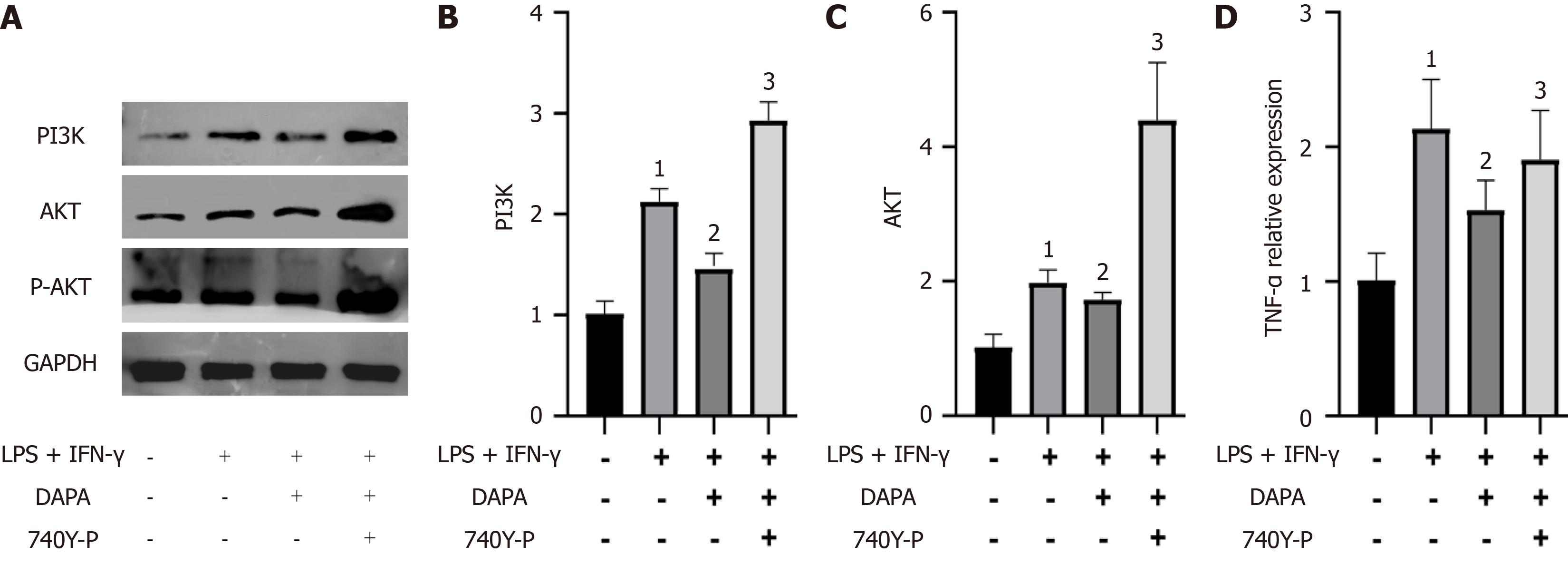Copyright
©The Author(s) 2025.
World J Diabetes. Feb 15, 2025; 16(2): 97287
Published online Feb 15, 2025. doi: 10.4239/wjd.v16.i2.97287
Published online Feb 15, 2025. doi: 10.4239/wjd.v16.i2.97287
Figure 7 Dapagliflozin inhibits the activation of the phosphoinositide 3-kinase/protein kinase B signaling pathway.
A: Protein imprints of phosphoinositide 3-kinase (PI3K), protein kinase B (AKT) and phosphorylated protein kinase B (P-AKT) in mouse peritoneal macrophages after dapagliflozin treatment. B: Quantitative analysis of PI3K; C: Quantitative analysis of AKT; D: Quantitative analysis of P-AKT. The bars indicate the mean ± SD from three independent experiments (n = 3). 1P < 0.05 vs normal control group; 2P < 0.05 vs lipopolysaccharides + interferon-γ; 3P < 0.05 vs lipopolysaccharides + interferon-γ + dapagliflozin. NC: Normal control group; LPS: Lipopolysaccharides; IFN-γ: Interferon-γ; 740Y-P: A PI3K/AKT signaling pathway agonist; DAPA: Type 2 diabetic mouse group treated with dapagliflozin; PI3K: Phosphoinositide 3-kinase; AKT: Protein kinase B; P-AKT: Phosphorylated protein kinase B.
- Citation: Xiong SX, Huang LJ, Liu HS, Zhang XX, Li M, Cui YB, Shao C, Hu XL. Dapagliflozin exerts anti-apoptotic effects by mitigating macrophage polarization via modulation of the phosphoinositide 3-kinase/protein kinase B signaling pathway. World J Diabetes 2025; 16(2): 97287
- URL: https://www.wjgnet.com/1948-9358/full/v16/i2/97287.htm
- DOI: https://dx.doi.org/10.4239/wjd.v16.i2.97287









